Barber Osgerby curate ’In The Making’ at London’s Design Museum
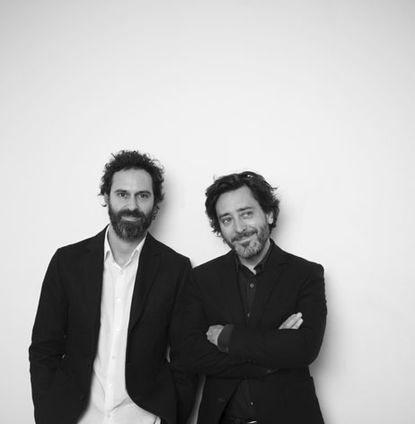
Design duo Barber Osgerby's new show 'In the Making' at the Design Museum is aptly timed. It's unlikely to have escaped your notice that interest in how things are made is gaining traction. The days of design appearing without any hint of the physical systems or material changes are long gone - only the tech sector is content to roll out shelves of shiny gadgets with little hint as to how they were made. Modern design is more acutely about process, foregrounding the skills not just of the designers but of every stage of their supply chain.
Edward Barber and Jay Osgerby know this better than most. Since founding their design studio in 1996, the duo have built up an eclectic but never ostentatious portfolio, collaborating with many of the biggest names in furniture manufacturing - Knoll, Vitra, B&B Italia, Cappellini, Venini, Flos, et al - as well as working on high profile projects like the £2 coin and the 2012 Olympic Torch. Not only that, they have a clutch of design awards and a pair of freshly minted OBEs to their name.
'In The Making' is the studio's first Design Museum exhibition. When Deyan Sudjic initially floated the idea, Barber and Osgerby thought about a retrospective show, but it swiftly became apparent that other ideas were bubbling up. 'There are themes we've never talked about, even in our recent book,' says Jay Osgerby. 'We're most passionate about seeing how things are made,' adds Barber, 'we always visit the factory whenever we meet with a manufacturer.'
'In The Making' is a physical presentation of this fascination, a 'collection of curiosities,' according to Osgerby. Explains Barber: 'We want to see how the manufacturing processes work. How things like waste products and intermediary stages work - sometimes the unfinished object is more magical.' This is a show about production, but also about objects. Removed from the context of the machines or craftspeople that shape them, each exhibit stands alone, spotlit on a plinth, offering us another way of seeing the strangely familiar.
Although the show only includes three items penned by Barber Osgerby themselves, it's safe to say that every item has some kind of personal relevance, regardless of the age of the manufacturing process. The designers are also keen to stress the educational benefits of such an approach. 'It's a nice antidote to the click and buy generation,' says Osgerby, 'we want to make people more fascinated by making.'
Kicking off with the vast front section of a London Underground train, shaped in several layers of superformed aluminium, 'In The Making's' curatorial process was akin to stepping up to the production line and removing an item at a critical stage, with each object labelled to show what stage it was 'paused' at.
Some are more recognisable than others - the marble emerging from the tube of glass, or the block of cedar wood pencils caught mid process. Others are far more abstract, some tantalisingly so, such as the graphic simplicity of the die cut felt used to make tennis balls - paused at 50% with a neat pattern of lozenge-shaped holes - or the blob of pure silicon before it has been shaved into wafers for making chips, or even the pure crystal that will ultimately become one of Swarovski's precision optic lenses.
Many of the objects on display are shown emerging from processes that are hundreds of years old, like the corks cut from a slice of bark, or the lovingly honed and finished cone of brass that's en route to becoming a French horn. More contemporary objects sits alongside, such as the pre-routed billet of aluminium destined to become a MacBook or the raw injection moulded foam of B&B Italia's Charles Sofa, sans upholstery.
'We tried to go for everyday objects, but we also wanted to get across as many different production processes as we could,' says Barber. The studio's own Tip Ton Chair is shown before the injected plastic has had a chance to fill the mould, leaving an uncanny-looking half-finished object ('It was brave of Vitra to let us show this,' Osgerby muses).
The presentation increases the sense of focus on a singular point in the journey of what are often very pragmatic objects - pencils, house bricks, tennis balls. 'It's like a jewellery shop,' says Barber, as he reaches across to make last minute adjustments to a spotlight or caption. Ultimately, as Sudjic notes, Barber Osgerby are 'designers who still care about things,' and the exhibition conveys a sense of wonder at the world (bolstered by a series of captivating process videos along one wall).
Even the most prosaic item has a hidden story - the metal bar that holds a fork's tines in place before being struck off at the very end of manufacturing, the fact that mixer taps are always produced in mirrored pairs for efficiency, or the modern aluminium drinks can being punched out from a flat sheet, rather than rolled up. 'In The Making' offers an insight - albeit a carefully curated one - into the realm of manufacturing, hopefully helping to inspire new generations of designers to take up the torch.
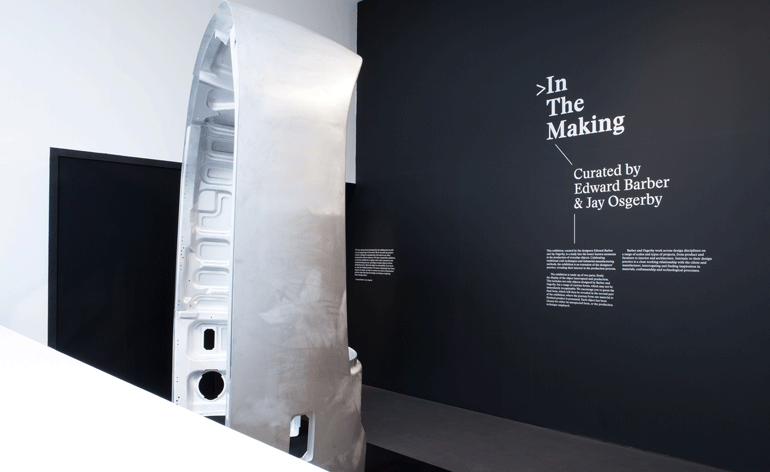
'In The Making's' curatorial process was akin to stepping up to the production line and removing an item at a critical stage, with each object labelled to show what stage it was 'paused' at. The exhibition kicks off with the vast front section of a London Underground train, shaped in several layers of superformed aluminium. Photography: Rosie Mirren, courtesy of the Design Museum
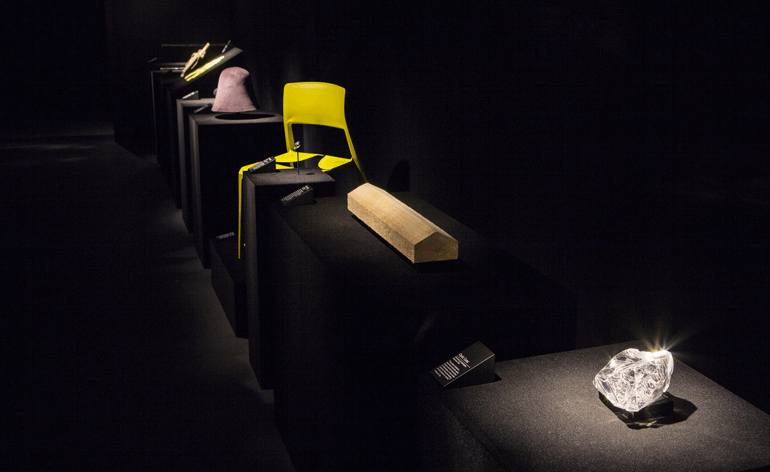
On show is a 'collection of curiosities,' according to Osgerby. Removed from the context of the machines or craftspeople that shape them, each exhibit - including some pieces by Barber Osgerby, such as the Tip Ton Chair (centre) - stands alone, spotlit on a plinth, offering us another way of seeing the strangely familiar.
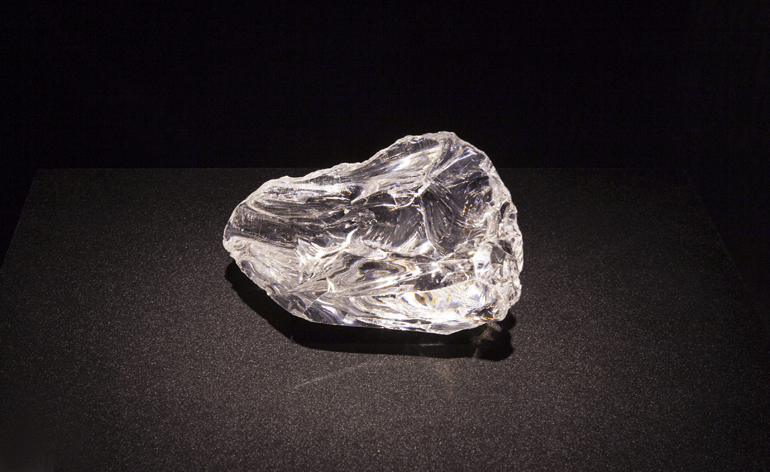
Pure crystal, before its transformation into a Swarovski optic lens. Photography: Rosie Mirren, courtesy of the Design Museum
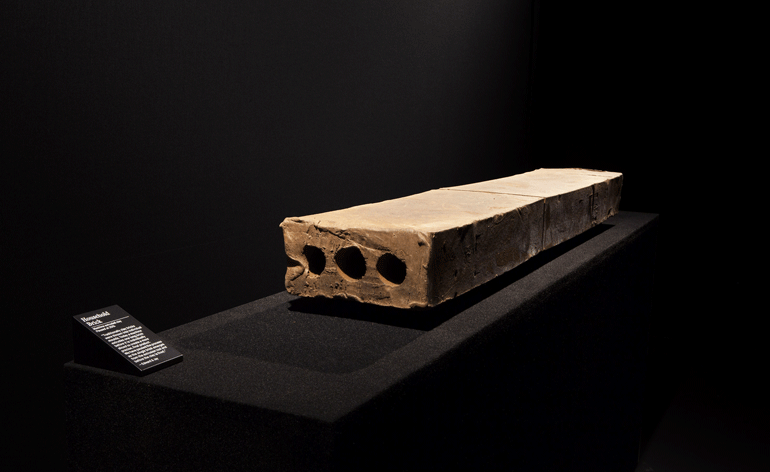
A standard clay housebrick begins life as a long extrusion that is then swiftly chopped into pieces. Photography: Rosie Mirren, courtesy of the Design Museum
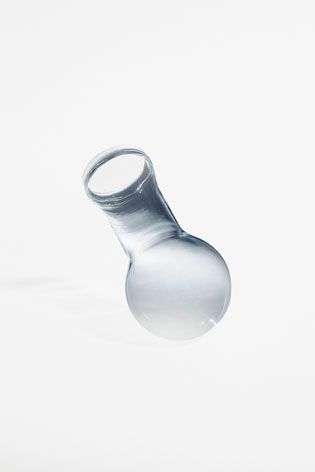
A halogen light bulb - a classically simple piece of blown glass, pictured before the element is installed. Photography: György Kőrössy
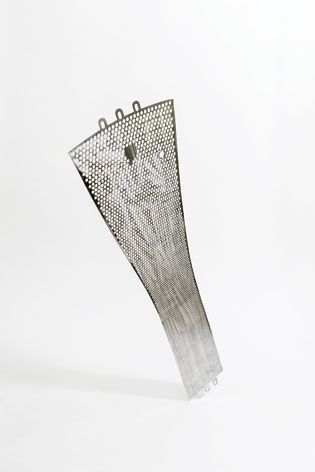
Barber Osgerby's design for the 2012 Olympic Torch used flat sheets of laser-cut aluminium that were then folded into shape. Photography: György Kőrössy

The MacBook is formed from a solid billet of aluminium, with space for circuitry and keyboard routed out. The waste aluminium is then reformed into new cases. Photography: György Kőrössy
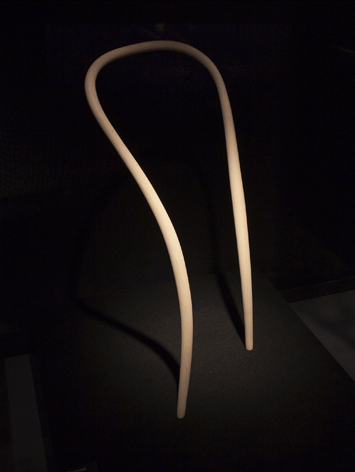
A back piece from a classic Thonet bent wood chair. It's form and process has endured for over 150 years. Photography: Rosie Mirren, courtesy of the Design Museum
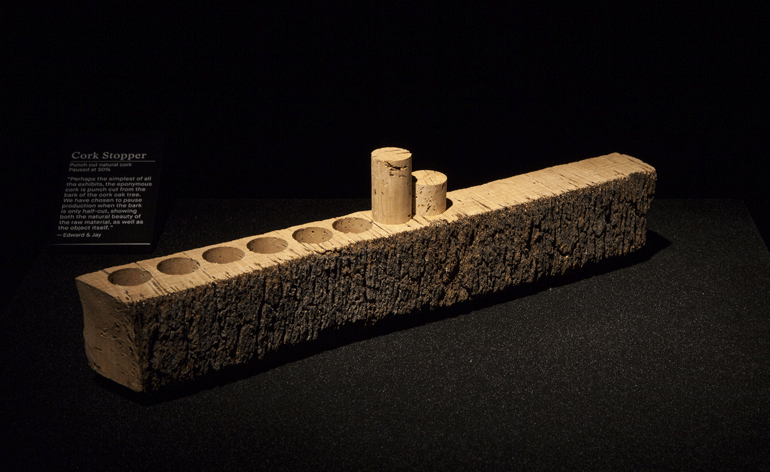
Corks are cut from strips of cork bark using a special tool. Photography: Rosie Mirren, courtesy of the Design Museum

The UK's £2 coin starts as two pieces of metal which are then bonded together. Barber Osgerby designed a £2 coin in 2013. Photography: György Kőrössy

Like many traditional brass instruments, this French Horn cone is formed using a process that dates back hundreds of years. Photography: György Kőrössy
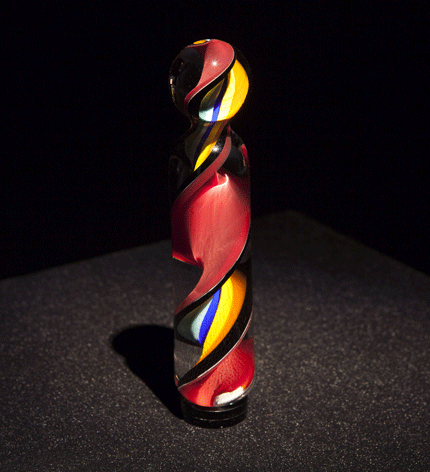
A marble, formed by twisting a specially created column of glass. Photography: Rosie Mirren, courtesy of the Design Museum

The modern aluminium drinks can is punched out of a super-thin sheet of the material, creating a seamless container that just needs a lid. Photography: György Kőrössy

The starting point for many different hat designs, a felt cone that the milliner will translate into the latest style. Photography: György Kőrössy

This complex cut of leather will form the upper surface of a modern football boot. Photography: György Kőrössy
ADDRESS
Design Museum
Shad Thames
London SE1 2YD
Wallpaper* Newsletter
Receive our daily digest of inspiration, escapism and design stories from around the world direct to your inbox
Jonathan Bell has written for Wallpaper* magazine since 1999, covering everything from architecture and transport design to books, tech and graphic design. He is now the magazine’s Transport and Technology Editor. Jonathan has written and edited 15 books, including Concept Car Design, 21st Century House, and The New Modern House. He is also the host of Wallpaper’s first podcast.
-
 The best fashion moments at Milan Design Week 2024
The best fashion moments at Milan Design Week 2024Scarlett Conlon discovers the moments fashion met design at Salone del Mobile and Milan Design Week 2024, as Loewe, Hermès, Bottega Veneta, Prada and more staged intriguing presentations and launches across the city
By Scarlett Conlon Published
-
 LEVC’s L380 is a truly magnificent minivan
LEVC’s L380 is a truly magnificent minivanThe London Electric Vehicle Company’s L380, is a magnificent minivan designed for upscale long-distance travel, as the maker of the London Taxi branches out into all-purpose EVs
By Jonathan Bell Published
-
 Enjoy ocean and jungle bliss at Bespoke Tulum’s residences in Mexico
Enjoy ocean and jungle bliss at Bespoke Tulum’s residences in MexicoBespoke Tulum is an exclusive hospitality complex designed by Muro Rojo Arquitectura on Mexico’s Caribbean coastline
By Sofia de la Cruz Published
-
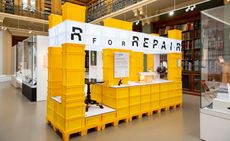 ‘R for Repair’ at London Design Festival displays broken objects, re-formed
‘R for Repair’ at London Design Festival displays broken objects, re-formedIn the second half of a two-part exhibition and as part of London Design Festival 2022, ‘R for Repair’ at the V&A displays broken objects, re-formed
By Martha Elliott Last updated
-
 ‘Finding quality through the act of making’: Pearson Lloyd celebrates 25 years of design
‘Finding quality through the act of making’: Pearson Lloyd celebrates 25 years of designPearson Lloyd’s show ‘Change Making’ reflects on past designs from its archives, showcasing the influences on and evolution of the studio, from furniture design to the NHS
By Martha Elliott Last updated
-
 Tom Dixon marks his studio's 20 years with a show of design experiments
Tom Dixon marks his studio's 20 years with a show of design experimentsMushroom, cork, steel coral and more: Tom Dixon showcases an overview of his design experiments as he celebrates his practice's 20 years
By Rosa Bertoli Last updated
-
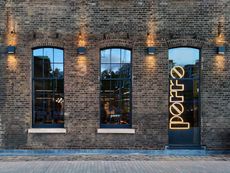 Porro unveils new London showroom at Coal Office
Porro unveils new London showroom at Coal OfficeLondon Design Festival 2022: industrial architecture meets pure geometries in the new Porro showroom, taking over a space within Tom Dixon’s Coal Office to showcase the brand’s systems and furniture
By Rosa Bertoli Last updated
-
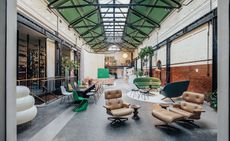 Vitra unveils new London home in the Tramshed, Shoreditch
Vitra unveils new London home in the Tramshed, ShoreditchLondon Design Festival 2022: after a year-long renovation, Vitra opens the door to its new showroom in the heart of Shoreditch
By Rosa Bertoli Last updated
-
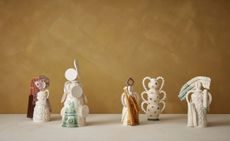 Mudlarking beside the River Thames inspires The New Craftsmen’s makers
Mudlarking beside the River Thames inspires The New Craftsmen’s makersLondon Design Festival 2022: The New Craftsmen’s new collection, ‘Claylarks’, features work from a group of creatives inspired by a River Thames mudlarking expedition
By Mary Cleary Last updated
-
 One tree, ten designers: SCP presents The One Tree Project at London Design Festival
One tree, ten designers: SCP presents The One Tree Project at London Design FestivalLondon Design Festival 2022: SCP enlisted ten British designers to create furniture and objects from a felled ash tree from founder Sheridan Coakley's Hampshire garden
By Francesca Perry Last updated
-
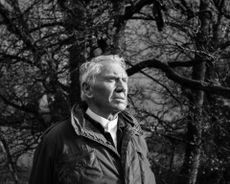 London Design Medals 2022
London Design Medals 2022London Design Medals 2022 are awarded to costume designer Sandy Powell, architect Indy Johar, researcher Joycelyn Longdon and photographer Sir Don McCullin
By Rosa Bertoli Last updated